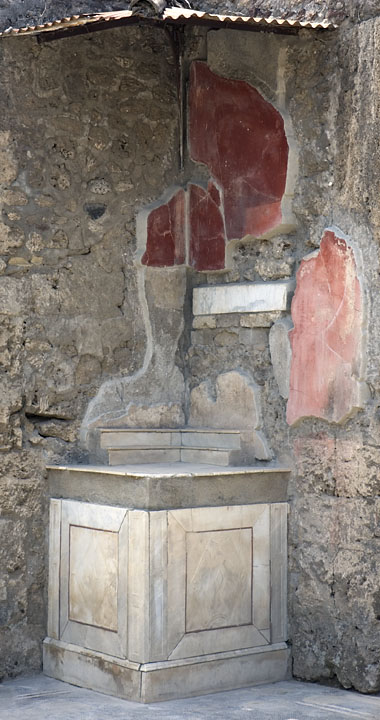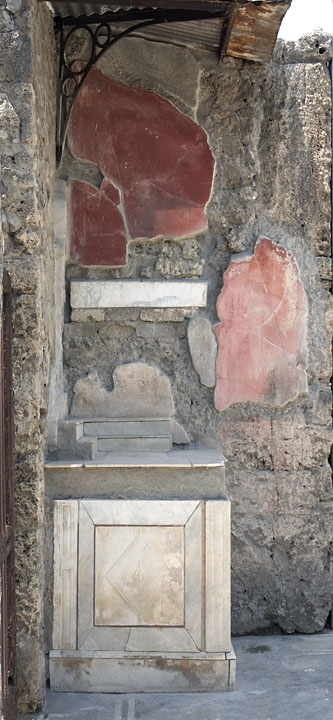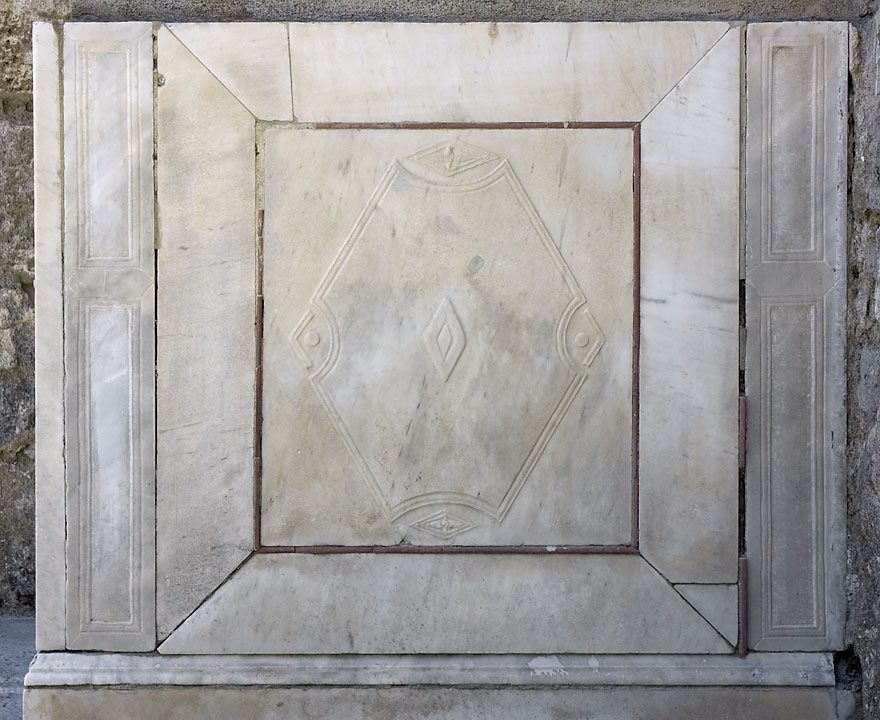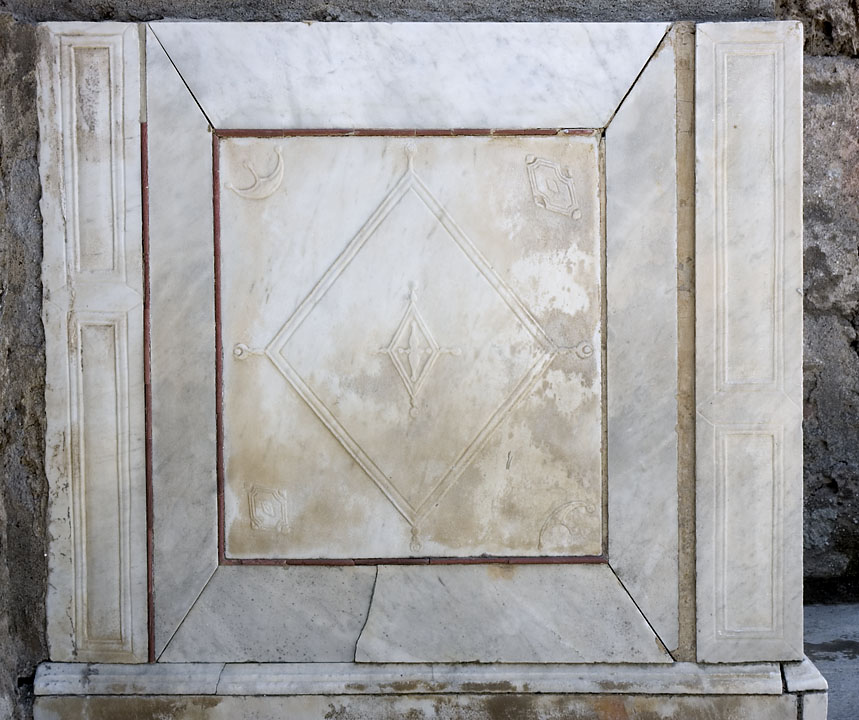Lararium
Description
A. Karivieri & R. Forsell
The lararium consists of a high podium standing on a base of, along the floor, a plain horizontal slab and a cuma-reversa moulding. The lararium has been built above the mosaic floor and the lowermost marble slab, in the northeast corner, is imbedded into the north wall. Some of the top slabs are broken. The two reliefs of the lararium have been removed. The eadicula and the columns holding it are missing.
The podium would have been surmounted by an aedicule that was supported by three wooden columns of which Mau states he saw clear marks. (Mau ). Two small marble steps run along the wall on the altar. They touch in the corner but do not reach all the way to the edge of the altar where they leave space for columns that in antiquity supported an aedicule.
Marble slabs are forming a rectangular panel on each side of the podium. Red, hard burned terracotta stripes separate the white marble slabs on the southern and eastern sides. Each panel shows a geometric pattern in fine relief. In the centre the slabs are dimond shaped although the corners are bowed inwards, cut by the rectangle that surrounds it. These rectangles are consists of four trapezoidal pieces of marble with terracotta stripes in between. In the corners framing the rectangles are vertical elements formed by rectangular pieces of marble shorter on top and longer below, except for the eastern part of the south side where the elements have been set upside down, shorter below longer on top.
Between the side slabs and the top slab where originally two reliefs now re-mowed. The one facing south was the famous earthquake relief, commemorating the earth quake of AD 62/63. The left part showed a triumphal arch, a tetrastyle temple on a high podium and an altar in front. Flanking the temple on both sides are podia on which can be seen a human figure astride an equine animal. Everything is tilting slightly. This scene is believed to show the Temple of Jupiter on the Forum of Pompeii. The right part of the relief showed a bull being led by a sacrificial attendant to an altar. On both sides are depicted objects connected to sacrifice.
The east facing relief had a criss-cross pattern and within its squares a number of object that has been suggested to be associated with sacrificial acts.
During a number of years a third earthquake relief could bee seen attached to the wall above the lararium. The relief showed the castellum aque unharmed and the Vesuvius gate on the verge of collapsing. That this third relief originally came from the House of Caecilius Iucundus is a matter of doubt. It was seen in a photograph taken in the deposit belonging to the temple of Vespasian in 1902. It was probably put up in the house of Caecilius Iucuncus in 1903 and disappeared in 1977.
pr. h. 1.15m, incl. steps 1.355m; w. 0.94m (E-W), 0.97m (N-S), h. of base 1.15m.
Steps: l. 0.69m (N-S), 0.615m (E-W), h. 0.205m; depth 0.19m





